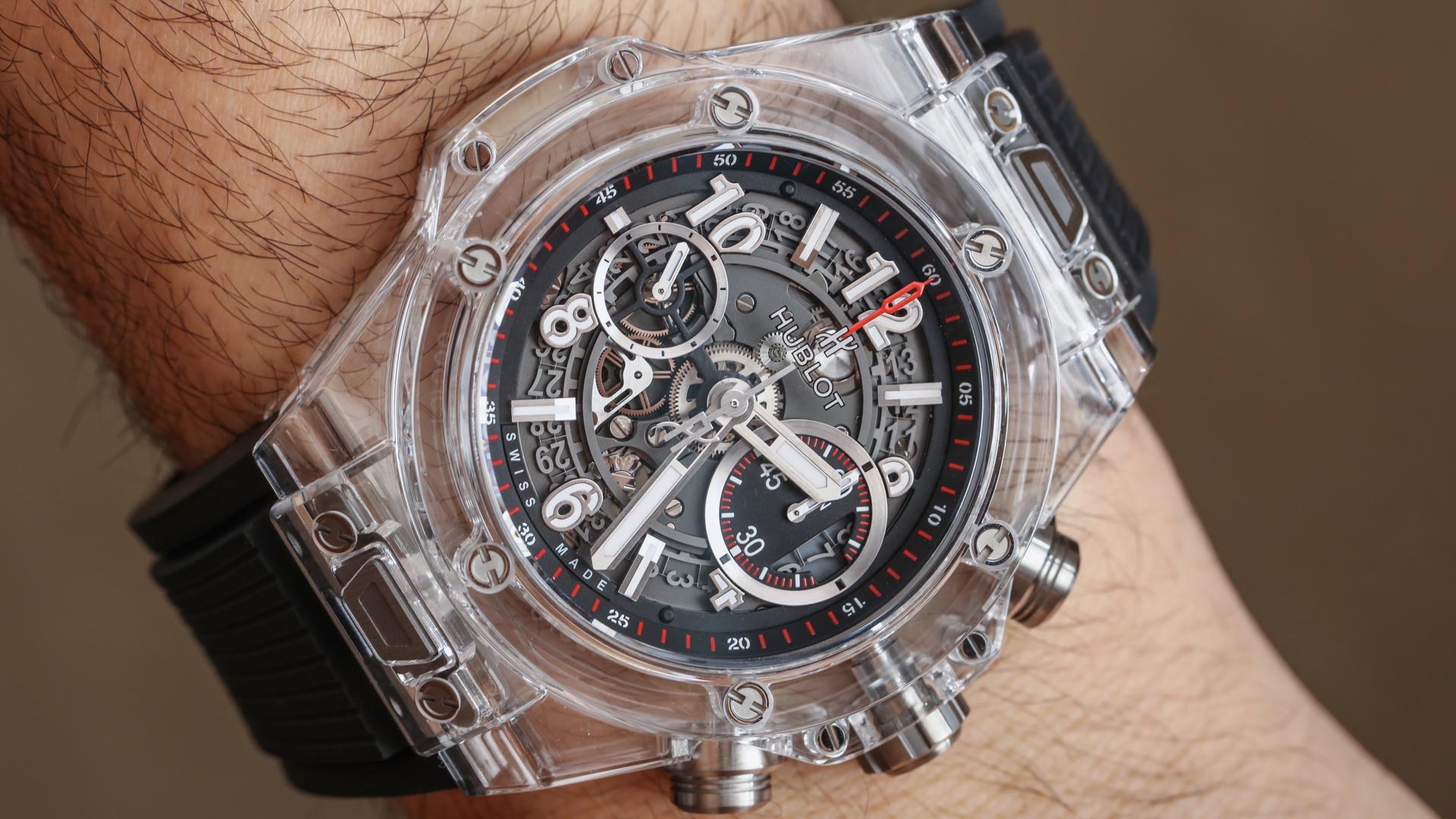
The Hublot Big Bang UNICO Magic Sapphire reference 411.JX.1170.RX is one of a few sapphire crystal-cased watches Hublot produces – and to date, it is my favorite. Several years ago the first sapphire crystal-cased watch I was aware of was released by ultra-high-end watchmaker Richard Mille with a price tag of over $1,000,000. I recall seeing it for the first time in a display case – unable to be touched but interesting to look at. No, this material certainly did not look like plastic. Now a few years later the price of a sapphire crystal case for a watch has seemingly come down to the mere mid-five figures. No, that isn’t exactly bargain priced but it does show you that demand (even in the luxury game that is the watch industry) will bring prices down. The same thing happened to ceramic watches – with both ceramic and sapphire crystal being celebrated for their scratch resistance. Now just a few years after eyeing that top-shelf Richard Mille as something I’d never have a chance to spend much time with, I am wearing a sapphire cased Hublot and I have to admit, it has been a really positive experience.
Sapphire crystal-cased watch prices will continue to come down in my opinion – even though most of the “good stuff” will always continue to be on the more expensive side. Let’s talk about what these watches are and why you might be interested. I believe it was the late 197os or early 1980s when synthetic sapphire crystal began to show up as a crystal material in wristwatches. Plastics and glasses were previously used as the protective cover over watch dials – whose primary weakness was scratching or easily shattering. Sapphire crystal was valued because of its close-to-diamond-like strength and high vicker rating (scratch resistance). For me, it is impossible to think of going back to a time when most watch crystals were less durable. Of course today you can get plenty of watches with mineral glass or traditional acrylic crystals – but nothing in my opinion comes close to sapphire crystal.
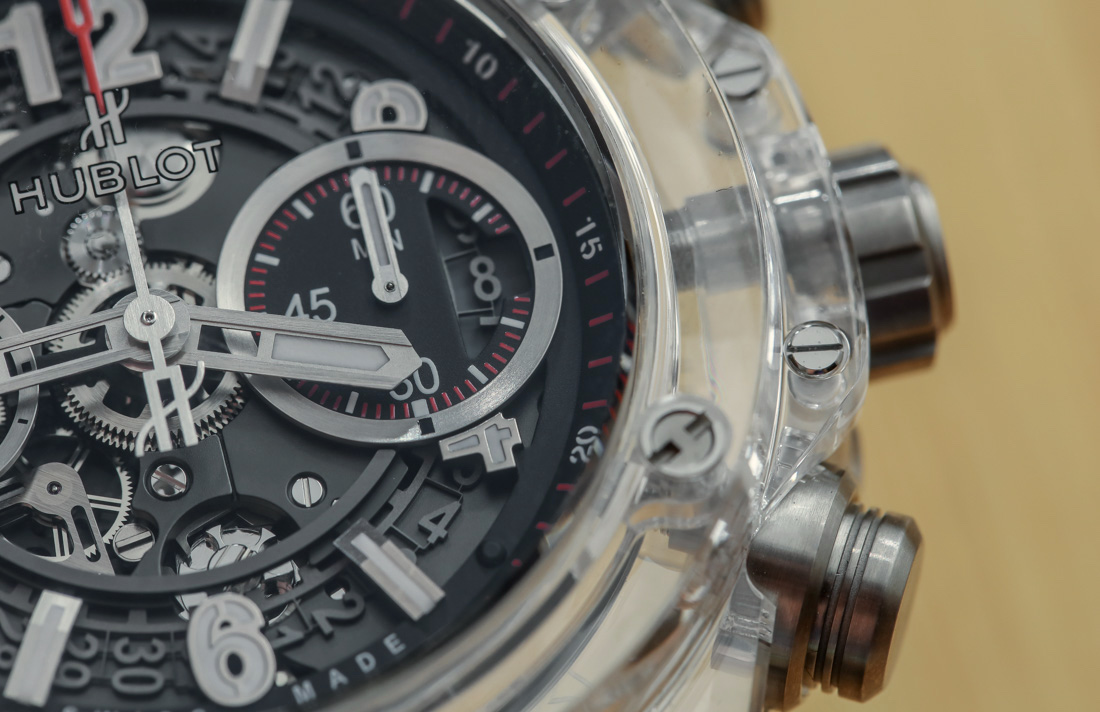
Making a round piece of machined sapphire crystal is something very different from making something as complicated as the parts which make up a watch case. This is the primary reason why sapphire crystal cases are so expensive. It isn’t that the base material is expensive, but rather what it takes to get an actual resulting case. One of the biggest problems is the failure rate in the machining process. That means that some of the parts will simply break (irreparably) while being cut to shape. I’ve heard from people who produce sapphire crystal parts that something like 30% of the parts made break during the machining process. But if the parts survive the machining process, they are generally without future problems. What also complicates machining sapphire crystal is that because it is so hard, it quickly wears down the cutting tools. This means that in addition to it taking a very long time to machine sapphire crystal (compared to metal that is) there is a lot of increased cost when it comes to supplying enough cutting tool heads to get the job done.
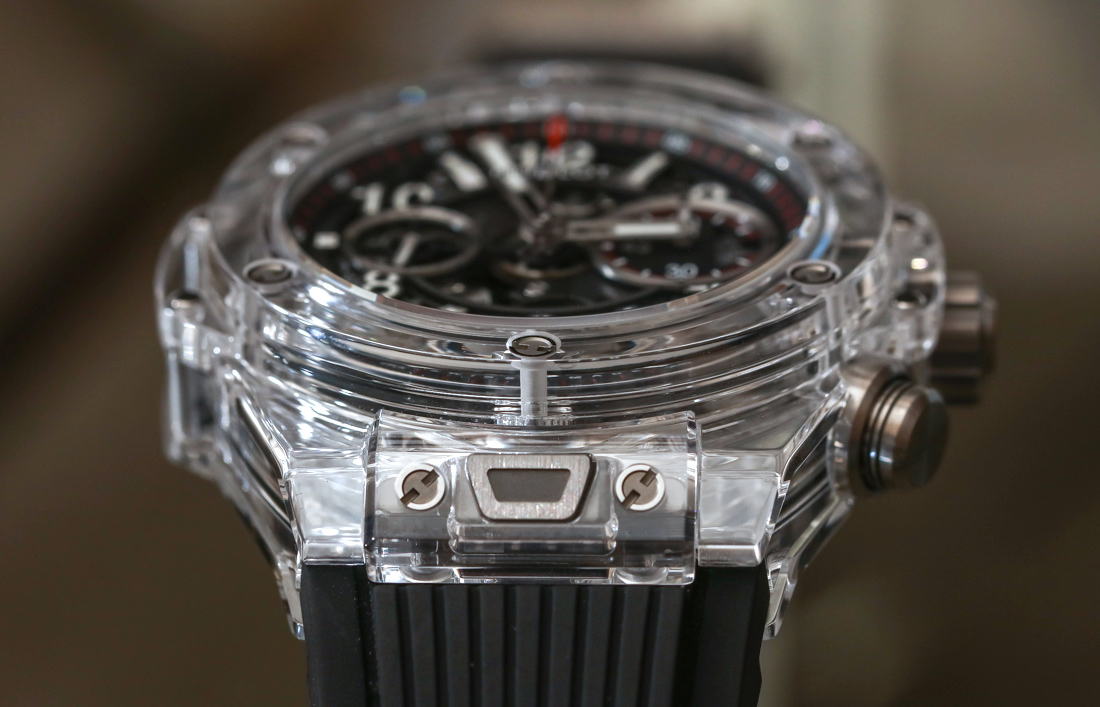
Round or circular shapes are the easiest to machine because they can be done on lathe-style cutters. That means something like the Hublot Big Bang UNICO bezel in sapphire is more simple to machine than the main top and bottom parts of the case. Overall the Big Bang UNICO Magic Sapphire is a moderately complex sapphire crystal case whose price actually seems fair when compared with the competition. What is important however is how it looks and feels. Like I said, this isn’t even remotely like plastic.

In most ways, this Magic Sapphire version of the Hublot Big Bang UNICO (original aBlogtoWatch review here) is the same as other models in the collection from a size, comfort, and movement perspective. The aforementioned review of the Big Bang UNICO was of the ceramic model and we also had an opportunity to review the Magic Gold version of the Hublot Big Bang UNICO here. What each of these watches have in common is that they do not have traditional metal cases – but rather more exotic (and some exclusive) materials which promote scratch resistance. Why scratch resistance? Because not everyone feels that a “wear and tear” patina on your luxury timepiece is something to be excited about. I for one prefer my watches to look new for as long as possible. Sapphire crystal as a case material is pretty good for that.
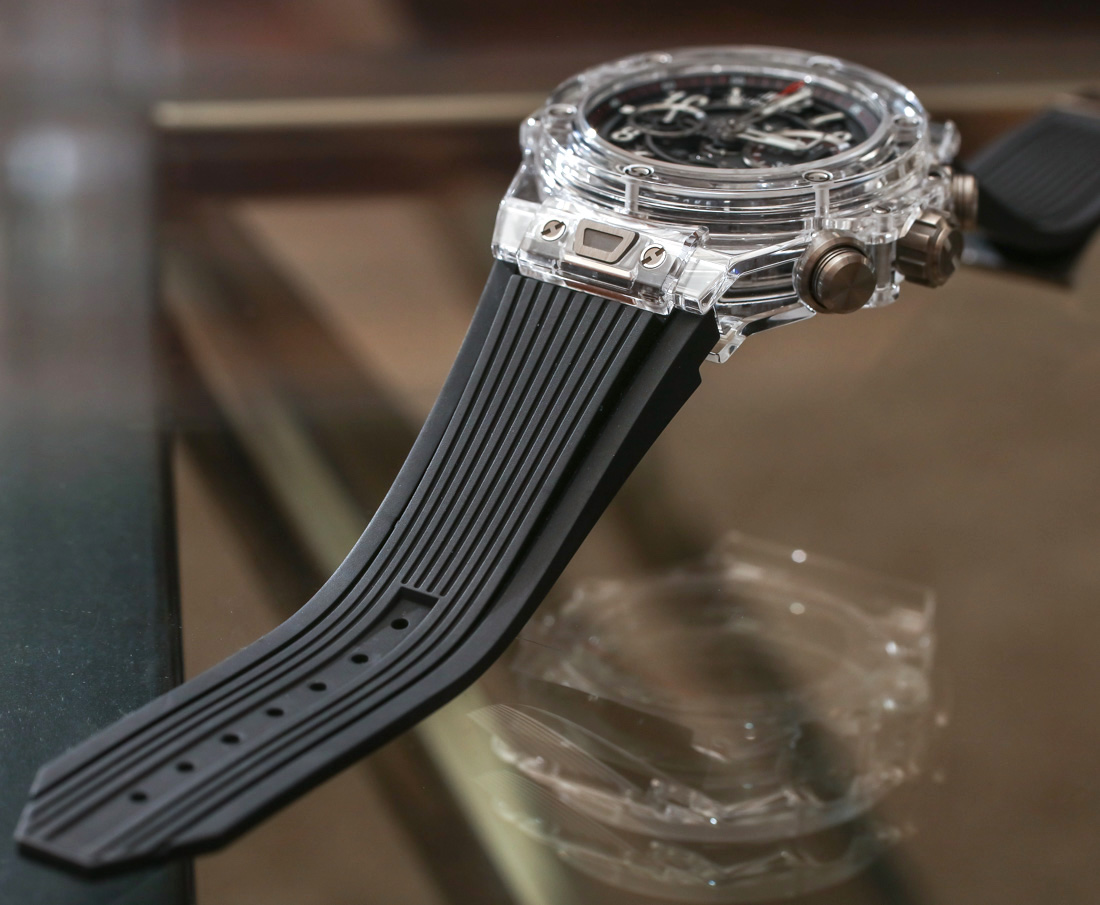
One of the most common rebuttals to a sapphire crystal case is that it can shatter. This is technically true if the watch is subject to enough shock. I’ve never heard of one shattering, but again, it is possible. Metal doesn’t shatter but rather bends (deforms). Sapphire crystal as a material is too hard to deform, and thus if given enough shock, it will crack and shatter. Is this something you need to worry about? I suppose it is if you are wearing your Big Bang UNICO Magic Sapphire where a G-Shock should go, but for the most part, I don’t think there is much to worry about. I feel pretty confident that even a few falls on a hard surface wouldn’t be enough to break the case. Worst case scenario – Hublot is there to fix it for you. Now, let’s not get into a discussion about luxury watch repair costs.
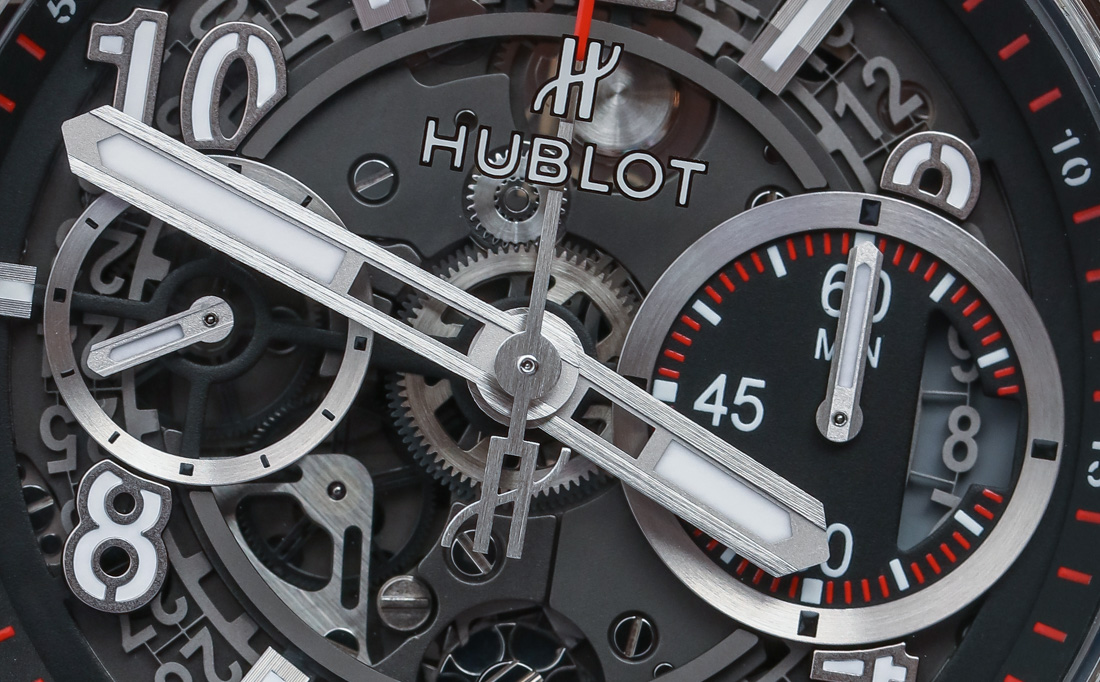

As I mentioned above, the appeal of sapphire crystal as a case material relates to scratch resistance, but isn’t all about scratch resistance. Though I think this quality is important to bring up because scratch-up is exactly what would happen if this case was plastic. People seem to worry that if they wear an expensive sapphire crystal watch, onlookers will mistakenly believe it to be cheap plastic. Perhaps for the first few days of wearing, but after a week a plastic watch would look terrible while one in sapphire crystal would look the same as when you got it. It isn’t that sapphire can’t ever scratch – but it is difficult to do. Hublot uses titanium for the screws, pushers, and some other parts on the watch such as the deployant on the strap.

